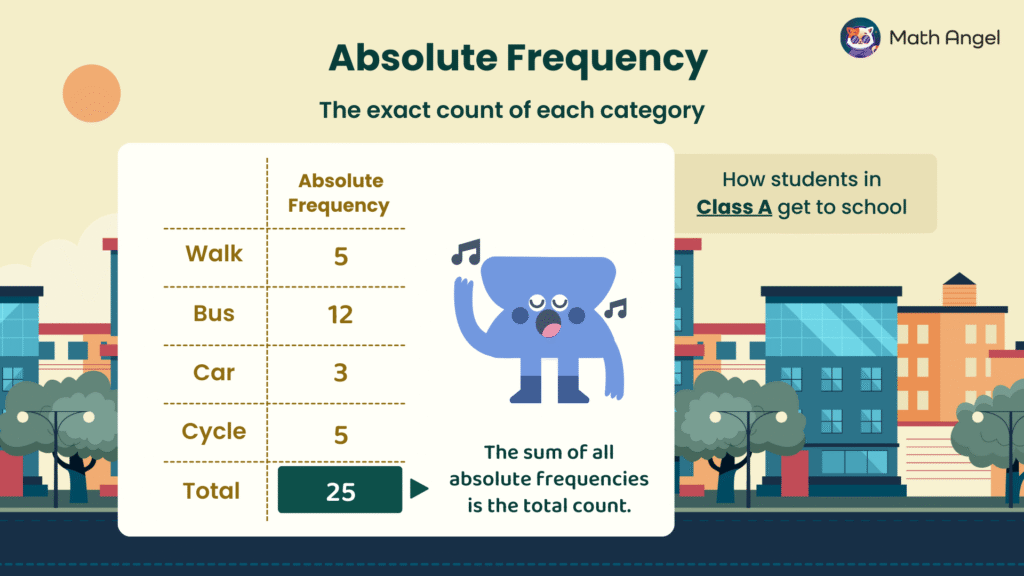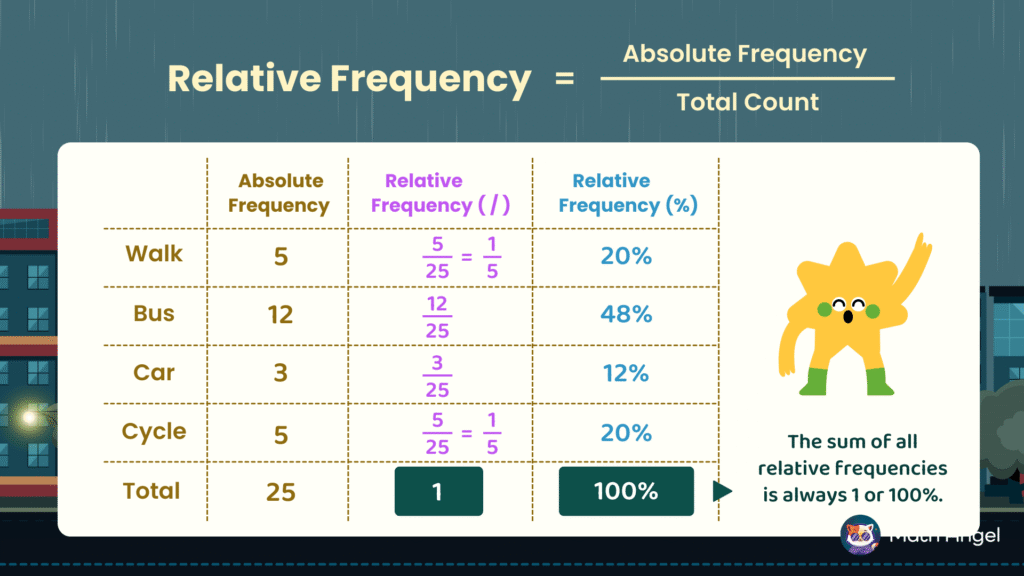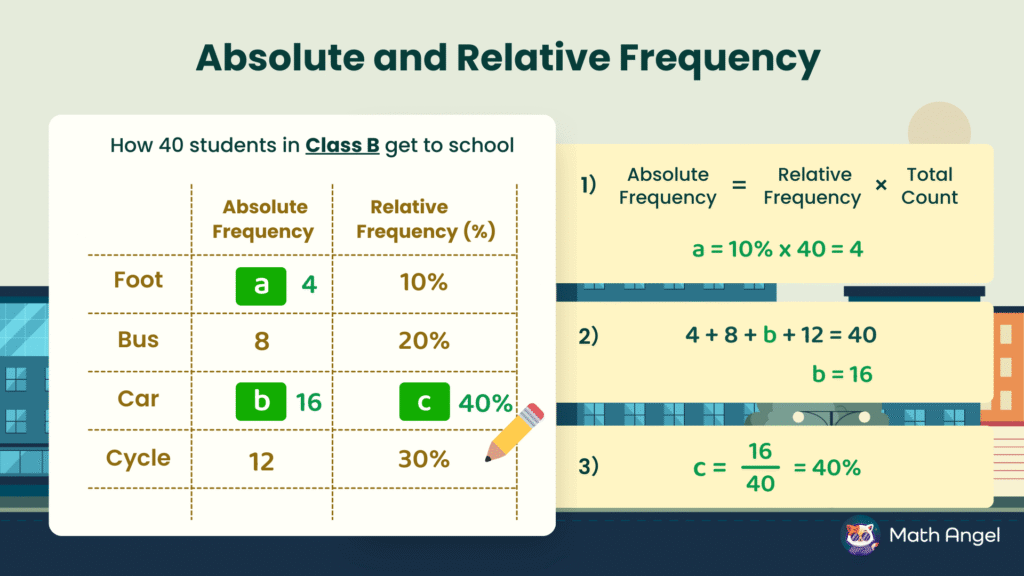🛎️ Absolute Frequency Definition:
Absolute frequency is the number of times a specific event occurs in a dataset.
For example, the table shows how students in Class A get to school. These exact counts represent absolute frequencies:
- 5 students walk
- 12 students take the bus
- 3 students travel by car
- 5 students cycle
The Total Absolute Frequency is the sum of all individual counts:
$$5+12+3+5=25$$
This means there are 25 students in Class A.




